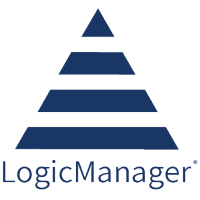Best Governance, Risk, & Compliance (GRC) Software & Tools for 2022
Governance, risk, and compliance tools automate enterprise tasks such as ensuring regulatory compliance and mitigating technical and physical risks, including financial, human capital, security, and property risks. Complying with multiple local, regional, national, and/or international legal standards requires enterprises to track each aspect of their business that might impact their ability to follow those regulations.
Jump to:
- What does GRC software do?
- What are the differences between GRC and risk management?
- Top GRC Tools
- How to choose a GRC tool
What does GRC software do?
GRC tools automate compliance with multiple regulatory standards and digitize meeting legal requirements by storing and tracking all risk management data and legal progress in one web or cloud-based portal.
GRC software provides a searchable online framework for:
- Identifying and quantifying areas of risk
- Documenting areas of risk
- Accessing current regulations surrounding those areas
- Creating and publishing processes created to mitigate the risks, as well as risk response plans
- Documenting compliance with mitigation strategies
- Stakeholder communication plans
GRC tools help enterprises manage and mitigate dangerous risks and optimize healthy, worthwhile risks. In the mid-1900s, modern risk management strategies started as insurance and financial derivatives. Businesses or individuals would assume or mitigate financial risk through derivatives, contracts that often involve potential monetary gain or loss. Insurance assumes that paying a certain amount of money is better than the risk of losing property.
GRC software allows businesses to manage many more risks than just financial or legal ones, such as human resources or technology threats. It also takes a more proactive approach to risk management – preparing for problems in advance — rather than being primarily defensive, like insurance, and paying money under the assumption that a problem will arise.
Before the evolution of business applications, companies stored paper or computer documents with any relevant legal information to prove their compliance with regulations. This is much less efficient and allows for more human error, while also risking physical damage or loss of important data. Now, GRC software allows enterprises to track regulatory compliance in a single web portal, which is better because all data is available digitally. Workflows take businesses through each step of the compliance process, often with charts and symbols to clearly delineate what tasks have already been done and what needs to be done. This allows companies to keep digital records of all the legal requirements they’re subject to, rather than sorting through filing cabinets.
Another feature of GRC tools includes alerting businesses and employees when a task needs to be completed or the business encounters a risk. Good GRC platforms are not passive; instead, they flag new risks and remind users about task deadlines that have been recorded in the system.
What are the differences between GRC and risk management?
GRC and risk management technologies differ very little now that the risk and compliance market and vendors have begun to intersect. Risk management experts acknowledge that the differences are subtle at best and practically nonexistent.
Enterprise risk management focuses on mitigating and optimizing risks, which includes regulatory compliance and audits. GRC focuses on helping enterprises manage and document risk management, compliance, and business governance practices. Integrated risk management (IRM) enhances ERM by extending its reach. This can mean technical or security functions: Reciprocity notes that Gartner considers security functions part of IRM.
Best GRC Tools
AuditBoard
AuditBoard is an enterprise platform with four modules:
- SOXHUB for Sarbanes-Oxley Act (SOX) regulation management
- OpsAudit for internal audits

- Risk Oversight for risk management
- CrossComply for compliance management
AuditBoard lists top risks and shows the state of each risk’s mitigation plan; it uses charts to visualize issue and gap remediation progress and audit schedules. Each audit shows thereviewer, the tester, the due date, and procedures associated with the audit.
AuditBoard offers training materials and videos, known as AuditBoard Academy, including SOXHUB, Workstream, and external audit training courses. It received particularly enthusiastic user reviews about its support team, which customers found very helpful.
Key Differentiators
- SOXHUB for businesses that want to focus on SOX compliance
- Highly-reviewed customer support team
- AuditBoard Academy with multiple training courses
- API for integration and pre-built integrations
LogicManager
LogicManager offers three products within the risk and compliance sector: GRC, IRM, or ERM. LogicManager customers receive a dedicated risk management consultant or a team of analysts as well as training sessions to help them learn the platform. LogicManager features include:
 Risk identification
Risk identification- Risk monitoring
- Risk mitigation
- One-click compliance
LogicManager includes tools to give visibility to teams to monitor for reporting to executives, such as dashboards and reports with heat maps and risk control matrices. Employees responsible for risk and compliance activities receive automated tasks and alerts.
Key Differentiators
- Dedicated risk management consultant(s) for each company that uses LogicManager
- One-click compliance
- Heat maps and risk control matrices for dashboards and reports
- Automated alerts and tasks for employees
MetricStream
MetricStream is an integrated risk management solution for enterprises that offers six risk-related modules, including third-party management, IT and cybersecurity, and audit and  financial controls.
financial controls.
MetricStream offers an Environmental, Social, and Governance module for businesses taking an ESG approach to their risk management. This includes managing requirements for ESG frameworks, such as the Global Reporting Initiative (GRI) for organizational sustainability and running supplier assessments.
Key Differentiators
- Best for those businesses who utilize the ESG approach to GRC
- Third-party management
- IT and cyber compliance solution
- Solution for SOX compliance
SAI360
SAI360 is an enterprise GRC solution based in the cloud. It provides compliance learning content, preloaded frameworks, and control libraries. SAI360 has a FastTrack GRC option  for companies that want to start their integrated risk management program as quickly as possible, offering out-of-the-box templates and faster end-user training.
for companies that want to start their integrated risk management program as quickly as possible, offering out-of-the-box templates and faster end-user training.
SAI360 offers configurable dashboards as well as out-of-the-box ones. Enterprises can create and modify processes to automate their audit and compliance tasks. Enterprises can also view dashboards for their internal audits, which include charts to track audit statuses and the percentage of satisfactory audits.
Key Differentiators
- Process modeling
- Customizable and out-of-the-box dashboards
- Framework includes APIs for integration with other systems
- FastTrack option for jumping right into risk management deployment
SAP GRC
SAP Governance, Risk, & Compliance has 10 modules, including Process Control, Audit Management, and Business Integrity Screening. The Business Integrity Screening module provides real-time scans of transactional data, so that users can detect fraud more easily.  SAP’s Watch List Screening module allows businesses to screen third-party partners for people or companies that have a flag or legal warrant assigned to them.
SAP’s Watch List Screening module allows businesses to screen third-party partners for people or companies that have a flag or legal warrant assigned to them.
SAP also has a cybersecurity, data protection, and privacy module, which includes a built-in security information and event management (SIEM) solution and threat detection. Users can analyze log data for aberrations and possible threats. SAP’s Identity and Access Governance module includes enterprise access controls and single sign-on for increased security.
Key Differentiators
- SIEM tool for on-premises or cloud environments
- Real-time scans of financial transaction data
- Third-party vendor and business partner screening
- Trade services module for international business
ServiceNow GRC
ServiceNow Governance, Risk, and Compliance is an enterprise tool that collects data from vulnerability scanners, prioritizes vulnerabilities, and shows which team members are  responsible for handling risks. ServiceNow GRC tells enterprises whether the risk from a vulnerability falls within their predetermined range of acceptability or if its estimated cost is unacceptable.
responsible for handling risks. ServiceNow GRC tells enterprises whether the risk from a vulnerability falls within their predetermined range of acceptability or if its estimated cost is unacceptable.
The Operational Resilience Management feature shows high risks, failed controls, and service outages; users can integrate it with ServiceNow’s business continuity and vendor risk management modules. Within the operational resilience dashboard, system administrators can view data on service details, technology, facilities, people, or suppliers, depending on their role within the organization.
Key Differentiators
- Operational resilience management
- Responsive support team
- Vendor risk management
- Business continuity management
- Privacy risk and compliance management
Also read: Best Business Continuity Management (BCM) Software
StandardFusion
StandardFusion is a GRC and integrated risk management platform that’s primarily designed with Infosec teams in mind. Its audit management solution includes internal and external audit options, and its compliance management covers more than six major regulatory standards:
- International Organization for Standardization (ISO)

- Service Organization Control (SOC) 2
- National Institute of Standards and Technology (NIST)
- Health Insurance Portability and Accountability Act (HIPAA)
- General Data Protection Regulation (GDPR)
- Payment Card Industry Data Security Standard (PCI-DSS)
StandardFusion provides information security questionnaires, either customized or out-of-the-box templates, customers can give to their vendors and other third parties. The vendor module also includes centralized contact management and vendor identification to track all third parties that affect the enterprise.
Key Differentiators
- Compliance management for a large number of regulations
- Internal and external audit management
- Vendor and third-party risk assessments and questionnaires
- Detailed data about each risk and asset
How to choose a GRC tool
If your enterprise is shopping for GRC solutions, consider the following questions:
On which components of risk and compliance should your business focus?
If you’re primarily concerned with one feature within the GRC realm, look for software that excels in it: for example, auditing, regulatory compliance, or security. Ensure that executive team members are on board with that area of focus as well.
Is the tool’s customizability appropriate for the size of your team?
Some GRC software is designed for large enterprises, and it’s very configurable, which is an advantage for teams that have the bandwidth to customize it. But smaller teams, especially those without dedicated teams for risk management or IT implementation, may need more out-of-the-box features.
How involved is the vendor in the deployment process?
Some vendors assign a dedicated analyst or team of technicians to help companies get a platform rolling. If you think you’ll want a lot of help with implementation, you’ll want to choose a provider that sticks with businesses for a while as they take time to deploy and learn a GRC platform.
Considering implementing a risk management tool? Read Best Risk Management Software.

